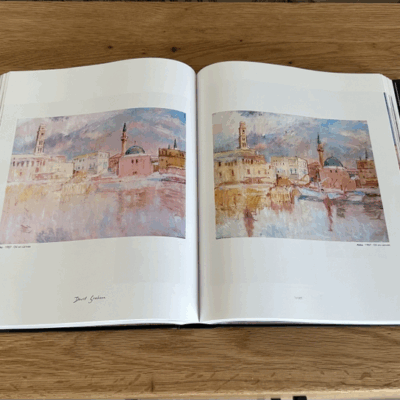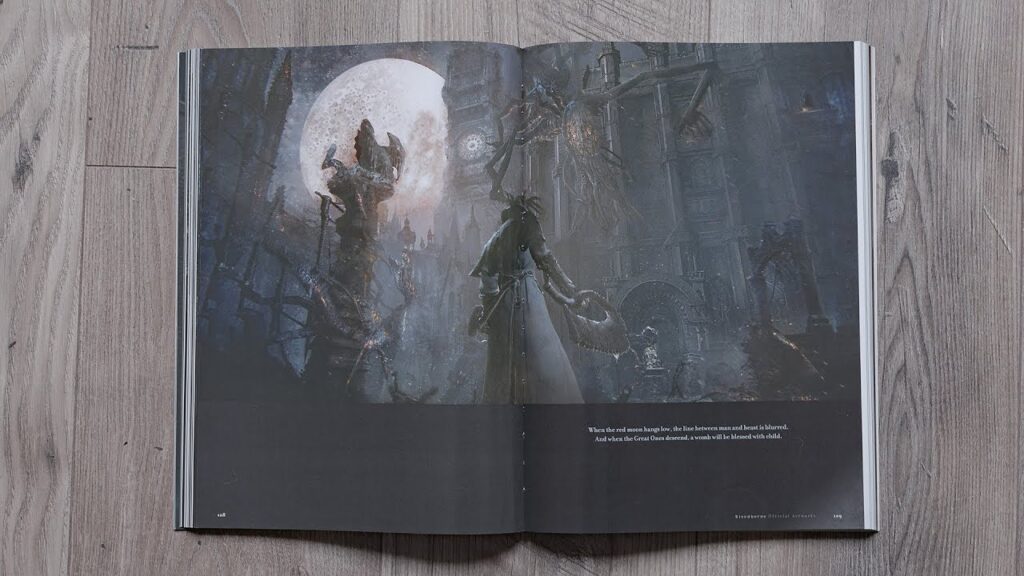The Complete Checklist for Printing a Successful art book
The Complete Checklist for Printing a Successful art book
Blog Article
Discover the Crucial Guide to Art Book Printing for Aspiring Artists and Publishers
As an aspiring artist or author, recognizing the nuances of art book printing is vital to bringing your vision to life. What are the vital elements you should focus on to create a sensational art book that absolutely represents your work?
Understanding Different Types of Art Books
When you dive right into the globe of art publications, you'll promptly discover that they come in different types, each customized to various imaginative expressions and audiences. Coffee table books usually display sensational visuals, best for laid-back browsing, while essays dive deep right into a specific musician's work, giving context and insights. If you have an interest in certain art motions, event brochures supply in-depth documents of programs, featuring essays and critiques.
For educational purposes, art guidebooks and method publications assist you through different mediums and styles, making them crucial for aspiring artists. Each style offers its purpose, and knowing their differences can improve your art book trip.
Selecting the Right Paper and Products
Choosing the appropriate paper and materials can significantly influence the total quality and feel of your art book. For lively shades and intricate details, choose for a shiny coating or a heavyweight matte paper that enhances visual depth.
Think of the weight of the paper, also. Thicker options typically provide an even more specialist look, while lighter papers can decrease printing expenses. Don't fail to remember concerning the binding products; a durable cover can secure your web pages and contribute to guide's visual.
Ultimately, take into consideration sustainability. Environmentally friendly options are gaining popularity and can mirror your worths as a musician. By very carefully choosing your paper and materials, you'll guarantee that your art book not only looks fantastic but also really feels unique in the hands of your visitors.

Selecting the Ideal Printing Strategies
When it involves publishing your art book, choosing in between balanced out and digital printing can substantially influence your end product. You'll also intend to consider just how paper high quality influences the general look of your art work. Let's discover these essential printing strategies to discover the ideal fit for your task.
Balanced Out vs. Digital Printing
While both countered and digital printing have their benefits, choosing the ideal method for your art book can substantially impact the last product. Balanced out printing offers top notch images and lively shades, making it perfect for bigger print runs. If you're looking to create hundreds or hundreds of copies, balance out will certainly give you constant outcomes and reduced per-unit costs. On the other hand, electronic printing succeeds for smaller quantities and quicker turn-around times. It enables very easy customization, enabling you to publish one-of-a-kind copies without extra configuration prices. Consider your spending plan, timeline, and the volume of your project. Eventually, your option needs to straighten with your artistic vision and distribution technique, making sure that your art book mirrors the top quality you desire.
Paper Quality Considerations
Picking the ideal paper quality can substantially improve the visual allure and tactile experience of your art book. For prints, a shiny surface can make images pop, while a matte coating offers a softer, extra subtle look.
Following, think of the sustainability of your option. Environmentally friendly alternatives are ending up being increasingly preferred and can attract environmentally-conscious viewers. Lastly, demand samples to see just how different documents work with your artwork, ensuring the final item reflects your vision flawlessly.
Making Certain Color Accuracy in Your Prints
To attain spectacular prints, you require to concentrate on color precision from the beginning. You'll intend to utilize color calibration methods to validate your display and printer are in sync. In addition, proofing your job prior to the last print run can assist capture any inconsistencies, assuring your art looks equally as you imagined.
Shade Calibration Techniques
Ensuring color precision in your prints begins with effective color calibration methods that assist keep uniformity between your digital pictures and last published products. First, calibrate your screen using hardware calibration tools to achieve the finest shade depiction. This confirms that what you see on-screen matches what gets printed. Next, choose a color profile suited for your printing process, like CMYK for print materials. Consistently examine your printer's setups and keep it to stay clear of shade changes. It's additionally necessary to use top quality paper that complements your inks, as different surface areas can greatly affect color result. By continually using these strategies, you'll improve the general quality of your art prints and better convey your imaginative vision.
Proofing for Accuracy
While you may believe your electronic photos await print, proofing is important for achieving color click here for more accuracy. Prior to devoting to a full print run, always ask for a proof from your printer. This allows you to see how shades convert from display to paper. Contrast the proof with your calibrated display to detect any type of discrepancies. Take notice of saturation, brightness, and shade, as these aspects can dramatically influence your end product.
If adjustments are required, connect plainly with your printer regarding your preferred results. Do not hesitate to demand several evidence if essential; it's worth the financial investment to get it. Eventually, comprehensive proofing assurances that your art work is represented as you envisioned it, preserving your creative honesty throughout the printing process.

Designing Layouts That Enhance Your Art Work
When you make layouts for your art book, it's important to contemplate exactly how each element communicates with your art work. Go for a balance in between visuals and text, guaranteeing neither eclipses the various other. Use white space tactically; it provides your art work space to take a breath and accentuates its information.
Think about the circulation of your book. Prepare pictures in a manner that overviews the viewers's eye, creating a narrative or thematic development. art book. Vary the dimensions and orientations of your artwork to maintain the format vibrant and intriguing
Select font styles that match your artwork without sidetracking from it. Keep text succinct you can try this out and pertinent, providing context or understanding that improves the viewer's experience.
Finally, examination different layouts. Publish examples to see exactly how the styles equate theoretically, and change as required. By thoughtfully creating your designs, you'll create an aesthetically interesting art book that reverberates with your audience.
Binding Choices for an Expert End Up
Picking the right binding choice can significantly impact the general discussion of your art book. You'll wish to consider both visual appeals and longevity when making your option. Popular options consist of excellent binding, which offers a smooth appearance and is ideal for thicker publications; saddle sewing, ideal for smaller sized brochures; and spiral binding, which allows pages to lay flat for very easy viewing.
If you're aiming for a costs feeling, instance binding is an excellent selection, offering a sturdy cover and an expert look (art book). Do not forget the cover material; alternatives like fabric, leather, or a glossy coating can boost your book's charm
Whatever option you select, make certain it complements your his comment is here art work and improves the visitor's experience. Take your time to consider the advantages and disadvantages of each approach, so your final product mirrors the high quality of your innovative vision.
Preparing Your Apply For Publish Preparedness
To ensure your art book is print-ready, you'll require to pay attention to submit prep work. Beginning by establishing your document dimension to match your preferred print measurements. Use high-resolution pictures-- 300 DPI is the standard-- to establish sharp, dynamic visuals. Convert your documents to CMYK mode, as this color space is ideal for printing. Do not fail to remember to include hemorrhage locations, generally an additional 0.125 inches around your pages, to avoid any kind of white edges after cutting.
Think about developing an evidence to review prior to the final print run. Complying with these steps will assist you achieve a polished, professional art book.
Frequently Asked Inquiries
What Is the Typical Price of Publishing an Art Book?
The standard cost of publishing an art book differs, but you can anticipate to pay anywhere from $5 to $20 per copy, depending on elements like dimension, paper high quality, and printing quantity.
How Can I Find a Reliable Printing Company?
To locate a reliable printing company, begin by researching on the internet evaluations and asking other musicians for suggestions. Compare quotes, examine portfolios, and interact your demands plainly to guarantee they comprehend your vision and top quality assumptions.
What Is the Normal Turn-around Time for Printing?
The normal turnaround time for printing differs but normally ranges from one to four weeks. Variables like project intricacy and volume can impact this. Constantly confirm with your selected printer for details timelines and expectations.
Can I Publish My Art Book in Limited Quantities?
Yes, you can certainly publish your art book in minimal amounts. Many printing business supply short-run options, enabling you to generate simply the number you need, making it much easier to manage costs and stock.
What Lawful Factors To Consider Should I Know for My Art Book?
You ought to think about copyright, licensing arrangements, and model releases when producing your art book. Make particular you have the right to utilize all pictures and message, shielding yourself from potential legal problems in the future.
Report this page